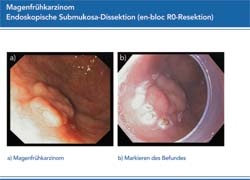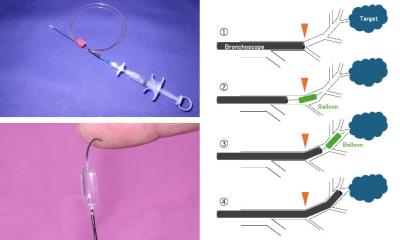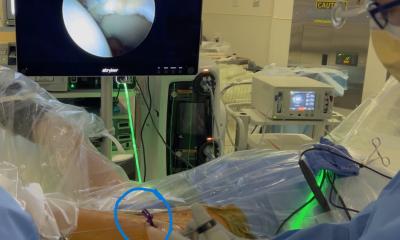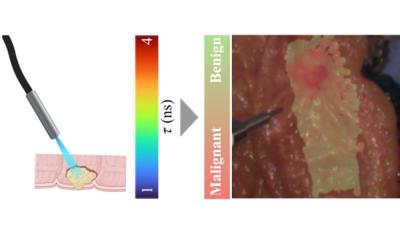Endoscopic submucosal dissection (ESD)
High resolution endoscopy triggers new approaches to the detection and resection of early-stage carcinomas. Zoom, Narrow Band Imaging and HDTV allow significant magnification of the endoscopic image and increasingly detailed rendering of the mucous membrane.

Consequently, pathologic changes can be detected earlier. Endoscopic submucosal dissection (ESD) provides experienced endoscopists with a new technique to resect early gastric cancer without damaging the organ affected. Thus, invasive surgery is no longer required to remove early-stage tumours of the oesophagus or the stomach.
‘The decision about whether a malignant gastric tumour may be resected by ESD depends on the tumour’s size and surface area,’ explained Dr Siegbert Faiss, medical director of the gastroenterology department at Asklepios Klinik Barmbek, Germany. ‘ESD is an option if the tumour of the oesophagus and the stomach affects only the lower mucosal layer or, in the case of a colon tumour, the lower submucosal layer.’
First, to mark the submucosa, a liquid is injected into it. Then insulation-tip diathermic knives – also known as IT-knives, hook-knives of flex-knives – are used to cut the mucosa generously around the neoplasm. Finally, the submucosal tissue under the neoplasm is dissected. Thus, an organ-sparing en bloc resection is performed. ESD ensures negative margins and local recurrence is reduced.
Though very promising, ESD has certain disadvantages: the procedure takes some time and bleeding as well as perforation risk are still quite high. This holds true particularly for inexperienced users, explains Barbara Opalka, product manager for endotherapy instruments at Olympus Medical Systems Germany, which produces ESD knives. ‘There are certain preconditions for their use: intensive patient information, sufficient training and an experienced operator,’ she adds.
In ESD workshops organised by Olympus to promote ESD, experienced endoscopists train surgeons to use the new instruments and ensure they can adequately handle complications if or when they occur.
The firm also supports the national ESD register, launched in October under the auspices of, among others, Dr Faiss’s department at Asklepios Klinik Barmbek and in partnership with the German Society for Gastroenterology (DGVS). The register aims to document the application of the ESD procedure to obtain information on outcomes. Data is being recorded on indication, complications and the therapy course for each patient. Within days of the announcement of the register 30 of the 120 German hospitals where ESD is currently being offered, had signed up, the company reports.
20.12.2008





